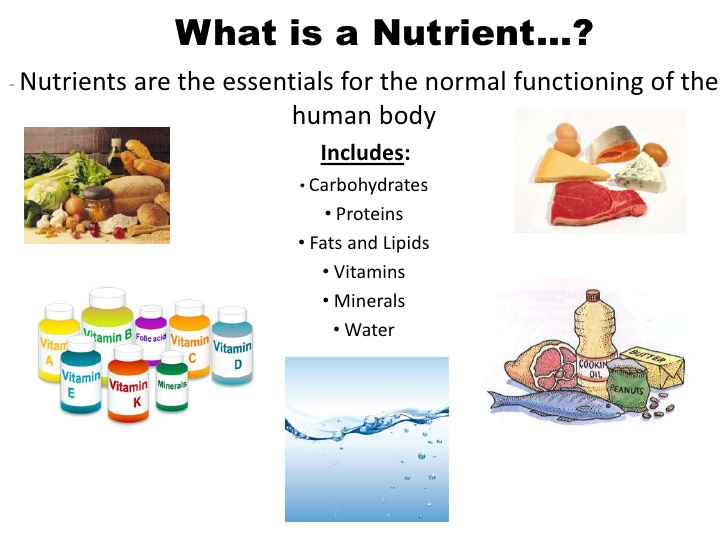
Nutrients are the chemicals (yes, chemicals—our entire bodies are made up of chemicals) in foods that our bodies require in order to function because we can’t make them on our own. How were these nutrients identified? Mostly by seeing what happened to people who somehow failed to consume those chemicals or consumed less than optimal amounts, or by serendipitously discovering that feeding a certain food to a person with devastating symptoms caused the symptoms to subside. Have we identified all the nutrients our bodies need? We don’t really know: It is entirely possible that foods contain some chemicals we require but have not yet identified. That is why reputable nutritionists emphasize the need to eat real, minimally processed foods——rather than trying to subsist on dietary supplements and highly processed, nutrient-fortified concoctions (like cheese-flavored snacks with protein or a few vitamins thrown in).
The nutrients can be divided into a few basic categories: macronutrients (carbohydrates, fats, and proteins), micronutrients (vitamins and minerals), and water! Only the macronutrients provide energy (also known as calories). But the vitamins and minerals (i.e. the micronutrients) in foods are vital for enabling the body to process and use the energy in macronutrients. Water makes up most of the space of our bodies, is absolutely critical for life, and is constantly being used up. Alcohol is a substance in a category all by itself: Our bodies have no need for alcohol, so it is not truly a nutrient, but many people consume it, and it has calories—lots of calories.
To really begin to understand the nutrients and how our bodies use them, please see the corresponding links in the menu tab above. Although these linked descriptions are not intended to be an exhaustive encyclopedia of nutrition and nutrients, they should provide a “quickie” overview tour of what we’re pretty certain we know and what we don’t know (the controversies), so that when you read my blogs or articles to which I link, you will have a frame of reference for this more cutting edge information..
Before you go off to read about nutrients, I need to remind you of something that might seem ludicrously obvious. We eat food, and all foods are mixtures of nutrients: We do not eat nutrients in isolation. When we sit down to eat dinner, we don’t fill our plates with a slab of protein, a ladle of carbohydrates, a few spoonfuls of fat, and a dash of vitamins and minerals. Every food supplies a unique combination of nutrients—the nutrients provided by an orange are pretty similar to the nutrients provided by a tangerine but substantially different from those provided by a slice of cheese or a slab of meat. That’s why those of us who are laser-focused on packing in certain nutrients may be seriously shortchanging our bodies or unnecessarily limiting the variety of foods we eat. It’s also why adopting diets that eliminate entire food groups—unless done for religious reasons or under strict medical/nutritional supervision—can be unwise. . Professional nutrition organizations—and the crafters of the current 2015 and soon-to-be-released 2020 U.S. Dietary Guidelines—have wisely switched the focus of these guidelines from single nutrients (like fat, sugar, protein, and salt) to foods, but every once in a while, we find ourselves needing to talk in terms of nutrients. So it’s helpful to know a little bit about why we need each nutrient, which foods are the best sources, and what other nutrients those foods might be sneaking in at the same time. I hope the linked subsections above help clarify questions you may have had about nutrients, but if you have others, please let me know and I’ll be glad to answer them as best I can. Happy eating!!